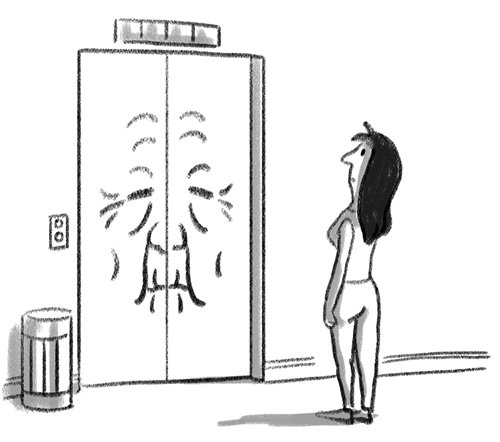China and sustainable modernization

Illustration: Liu Rui/GT
During my recent trip to Japan, a friend told me that the elevators in the building of a Chinese institution in the country had been used for nearly 20 years and never had a malfunction. Maintenance personnel come to inspect and maintain the elevators regularly.
That reminds me of an elevator in my apartment building in Beijing, which clanked when opening and closing. The servicemen come to fix it when the residents complain, but the elevator door always resumes clanking a few days later. After several attempts, the residents stopped reporting the problem.
A clanking elevator is no big deal. But in today's world where details make a huge difference, how an elevator is maintained reflects the different ways that China and Japan view modernization.
For Chinese people, modernization is connected with large construction. In other words, it is massive construction that realizes China's modernization. High-speed rails, highways and towering buildings are the achievements and symbols.
In comparison with many Japanese cities, China has built an amazing number of new things. By contrast, Japan appears old and to have obviously entered the post-modernization era.
That doesn't mean Japan is obsolete, but instead the Japanese repair old things and make them as good as new. Old equipment and facilities in Japan are still providing a high-quality service for modern life. They were the most advanced in the beginning, and they remain so after decades of use, not inferior to the new equipment and facilities in any sense.
When I travelled in countries like Germany and Sweden, I noticed that the infrastructural facilities there, though timeworn, are as functional as the new. In many buildings built in the 1960s, the old and confined elevators work very steadily, as if recently installed.
After consulting information online, I understand that the service life of most of China's elevators is shortened through problems with maintenance and substandard parts. This shows some Chinese cities pursue construction but neglect maintenance.
The essence of modernization is not only construction, but also maintenance. The lifetime of a machine may be prolonged from 30 to 50 years through meticulous service, which shows a sense of sustainability.
Compared with servicing modern facilities, quickly building up some magnificent landmarks will shed much more luster on a city manager. Nonetheless, a city may be troublesome if it ignores maintenance.
In China, a road may be rebuilt and stuffed with new materials every one or two years. When you look at the messy and mingled wires up in the sky, you might understand what real modernization is.
Maintenance of modernization includes the upkeep of facilities so as to prolong their lifetime. People who use these facilities should abide by the rules accordingly.
To maintain modernization, the cities' "software" needs to be renewed. For example, the shared bikes in China's metropolises are often piled up or parked randomly, which damages modern cities. Recently, Beijing South Railway Station's lack of taxis also indicates the importance of management.
China's modernization has come to an essential stage. Although further innovations are important, sustainability turns out to be crucial.
The author is a senior editor at People's Daily and a senior fellow at the Chongyang Institute for Financial Studies at Renmin University of China. dinggang@globaltimes.com.cn Follow him on Twitter at @dinggangchina

